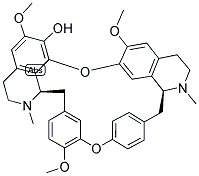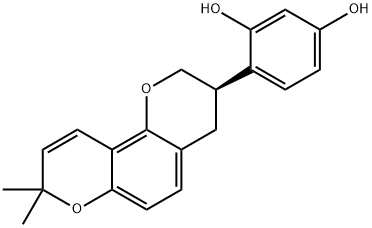PRODUCT Properties
| Melting point: | 240~242℃ |
| Boiling point: | 709.7±60.0 °C(Predicted) |
| Density | 1.204±0.06 g/cm3(Predicted) |
| storage temp. | 4°C, protect from light |
| solubility | Soluble in chloroform and methanol; |
| pka | 9.38±0.20(Predicted) |
| form | powder to crystal |
| color | White to Orange to Green |
| Water Solubility | slightly soluble in water |
| InChIKey | IIQSJHUEZBTSAT-VMPREFPWSA-N |
| SMILES | OC1C(=CC2CCN([C@@]3([H])CC4=CC=C(C(OC5=CC=C(C=C5)C[C@]5([H])N(CCC6=CC(=C(C=C65)OC=1C3=2)OC)C)=C4)OC)C)OC |
Description and Uses
Fangchinoline is an alkaloid that has been found in S. tetrandrae and has diverse biological activities, including anti-inflammatory, neuroprotective, and anticancer properties. It inhibits the activity of sheep COX and decreases IL-6-induced proliferation of MH60 mouse hybridoma cells with IC50 values of 129 and 3.7 μM, respectively. Fangchinoline (1 and 10 μM) reduces cyanide-induced increases in secreted glutamate levels and cell death in primary neonatal rat cerebellar granule neurons. It decreases proliferation of PC3 human prostate cancer cells by 63 and 86% when used at concentrations of 20 and 30 μM, respectively. Fangchinoline reduces tumor growth in a PC3 mouse xenograft model when administered at a dose of 5 mg/kg per day for 12 days.
(+)-Fangchinoline is an isolate from Stephania Tetrandra that shows anti-cancer activity. It inhibits breast adenocarcinoma proliferation through apoptosis induction. In addition, it has been shown to inhibit HIV-Type 1 replication.
Safety
| Symbol(GHS) |  GHS07 |
| Signal word | Warning |
| Hazard statements | H302 |
| Precautionary statements | P264-P270-P301+P312-P330-P501 |
| HS Code | 2939.79.0000 |




